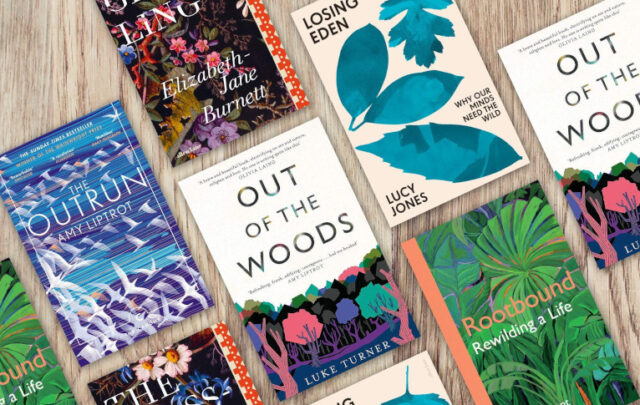
A roundup of the news, views and ideas from the main stream press and the blogosphere. Click on the headline link to see the full article.
Why Some Teams Are Smarter Than Others
Woolley, Malone and Chabris; New York Times
…the smartest teams were distinguished by three characteristics.
First, their members contributed more equally to the team’s discussions, rather than letting one or two people dominate the group.
Second, their members scored higher on a test called Reading the Mind in the Eyes, which measures how well people can read complex emotional states from images of faces with only the eyes visible.
Finally, teams with more women outperformed teams with more men.
…A new science of effective teamwork is vital not only because teams do so many important things in society, but also because so many teams operate over long periods of time, confronting an ever-widening array of tasks and problems that may be much different from the ones they were initially convened to solve. General intelligence, whether in individuals or teams, is especially crucial for explaining who will do best in novel situations or ones that require learning and adaptation to changing circumstances.
(16 Jan 2015)
Suspicion CONFIRMED! -BA
On why I painted author, educator, and gardener Joan Gussow
Robert Shetterly, Common Dreams
Editor’s note: The artist’s essay that follows accompanies the ‘online unveiling’—exclusive to Common Dreams—of Shetterly’s latest painting in his "Americans Who Tell the Truth" portrait series, presenting citizens throughout U.S. history who have courageously engaged in the social, environmental, or economic issues of their time. This painting of author and gardener Joan Gussow, one of the first experts to advocate that we "eat locally, think globally"…
Joan Dye Gussow will be 87 this year. I visited her last August at her lovely home on the Hudson River north of New York City. The house, designed by her and her late husband, the painter Alan Gussow, abuts the road at the front. Most of Joan’s energy, however, goes into the narrow lot running behind the house down to the Hudson. The lot is all garden—vegetable and flower beds and fruit trees. In 2012, Hurricane Sandy decimated her garden, drowning it under six feet of water. At 83 she rebuilt her garden beds, raising them a foot and constructing a small dike to withstand frequent flooding.
I did not paint Joan Gussow for the Americans Who Tell the Truth series because she is an octogenarian heroically struggling to save her gardens from climate change and its effects on a massive river. I chose to paint her because for longer than almost anyone else in this country she has been preaching the necessity—for human health, ecological health, and energy health—of local, organic agriculture. About Joan Gussow, Michael Pollan, author or The Omnivore’s Dilemma and whose portrait I have also painted, said, “Once in a while, I think I’ve had an original thought, then I think and read around and realize Joan said it first.” The New York Times calls her, “The matriarch of the eat-locally-think-globally food movement.”
(17 Jan 2015)
One of my heroes. -BA
Bitcoins: "There’s a blockchain for that!"
Scott Rosenberg, Medium
The code that secures Bitcoin could also power an alternate Internet. First, though, it has to work
There’s this hopelessly geeky new technology. It’s too hard to understand and use. How could it ever break the mass market? Yet developers are excited, venture capital is pouring in, and industry players are taking note. Something big might be happening.
That is exactly how the Web looked back in 1994 — right before it exploded. Two decades later, it’s beginning to feel like we might be at a similar liminal moment. Our new contender for the Next Big Thing is the blockchain — the baffling yet alluring innovation that underlies the Bitcoin digital currency.
Wait a minute and I’ll explain exactly how the blockchain works. (Or at least try.) For now, think of it as a way of transferring a digital message from one party to another, where both parties can count on the integrity of the message, even when they don’t trust, or even know, each other. Right now, these messages are mostly virtual cash. But they could be any kind of information.
(13 Jan 2015)
I never understood bitcoins before, and on general principle was skeptical. I still am skeptical about bitcoins, but the underlying technology could have some interesting and perhaps far reaching applications. -BA
Deep Democracy: Can it Help Solve the ‘Wicked Problems We Face Today’?
Deirdre Fulton, Common Dreams
New report says an empowered citizenry could help make food sovereignty—a food system of, for, and by the people—practical and real
Citizens and communities engaged in "deep democracy" have the potential to counteract the ills plaguing society, such as historically low voter turn-out, ideological extremism, rampant inequality, and expanding corporate influence, according to a report issued this week by the Institute for Agriculture and Trade Policy.
In particular, the report’s authors argue, "the efforts underway to make food systems more resilient and sustainable can be supported and facilitated through deep democratic processes."
Food advocates face a system with insufficient access to affordable food, huge amounts of food waste, and obesity all at the same time. "How can we simultaneously counter trends in hunger, obesity, widening socioeconomic disparity, an aging farm population being squeezed out of sustainable livelihoods and environmental damage?" wonder M. Jahi Chappell and Jill Carlson, co-authors of "Deepening Food Democracy" (pdf).
With deep democracy, that’s how.
"Deep democracy blurs the lines between the government and citizen in order to make both more effective at solving tough problems," they write.
(16 Jan 2015)
Suggested by contributor Luane Todd, as was the article on Joan Gussow. -BA





